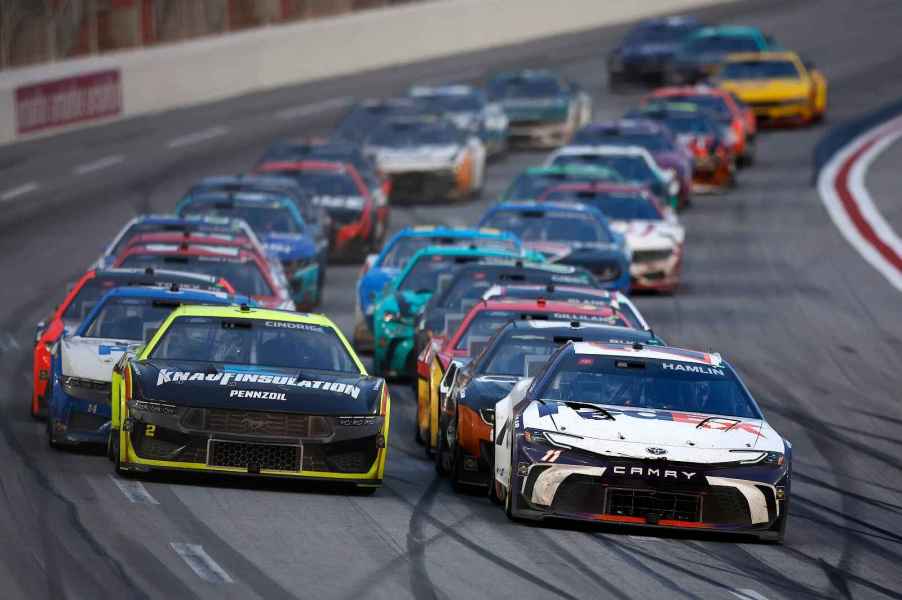
The Rules That Reshaped NASCAR Cars
NASCAR has gone through remarkable technological changes since its 1948 inception. Originally, the National Association of Stock Car Auto Racing raced, well, stock cars. In other words, vehicles ordinary motorists could pick up at a dealership. In the 75 years since then, NASCAR cars have evolved and standardized, pursuing maximum specs in safety and speed. This has led to a narrowing of options for the sport’s three official carmakers.
NASCAR has strict rules and regulations about equipment
Certain variations are permitted between cars, but all have to follow a strict set of rules, most focused on safety. Per Rookie Road, regulations start with the driver. Every NASCAR competitor has to wear a helmet and fire suit. Their number must be marked on their uniform as well as the roof and sides of their vehicle.
As for the vehicle itself, rules have recently reshaped what NASCAR cars can be. In the wake of tragedies in the early 2000s, notably the death of Dale Earnhardt, NASCAR has refined and standardized vehicle design in the name of safety. Those efforts have most recently produced the Next Gen design, which debuted in the 2022 NASCAR Cup season. The Next Gen body template is required for all competitors at the Cup Series level. Beyond body type, HowStuffWorks reports NASCAR Cup vehicles must be rear-wheel-drive with a V8 engine tuned to a target 670 horsepower.
The Xfinity series, NASCAR’s second tier, follows similar design notes with the Car of Tomorrow body type, which was also used in Cup competition prior to the Next Gen’s introduction in the 2022 season. In the Truck Series, the racing pickups all carry pushrod V8s and, per Motor Racing Sports, must weigh at least 3,400 pounds without fuel or driver. NASCAR also mandates specific body type elements for each manufacturer in the Truck Series.
How different are NASCAR vehicles allowed to be?

At the same time, while body shape is tightly controlled at all levels of NASCAR, a certain degree of customization is allowed. As Rookie Road reports, crews are permitted to optimize wheel arches and hood shape, plus elements of the rear end. Every crew has their own notion of what design delivers optimum performance.
What street-legal cars are NASCAR vehicles based on?
Three automakers build all NASCAR vehicles. In keeping with NASCAR’s stock-car heritage, Ford, Chevrolet, and Toyota provide the Cup Series with highly modified versions of the Mustang, Camaro, and Camry respectively. The Xfinity Series also runs Mustangs and Camaro, but Toyota uses the Supra instead of the Camry. In the Truck Series, those companies run the F-150, Silverado, and Tundra.





